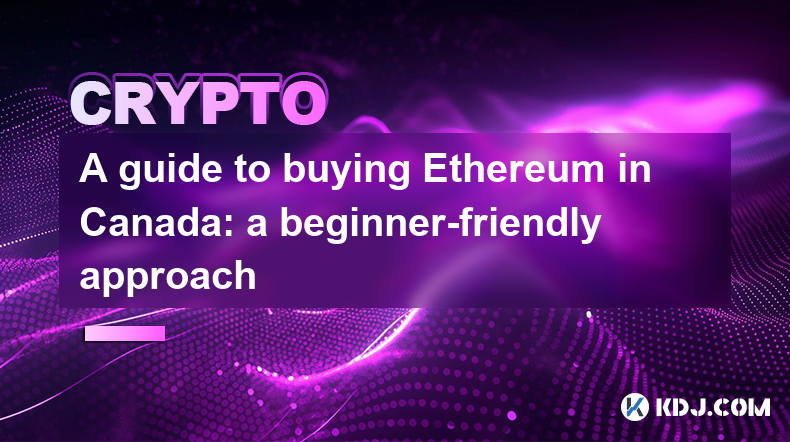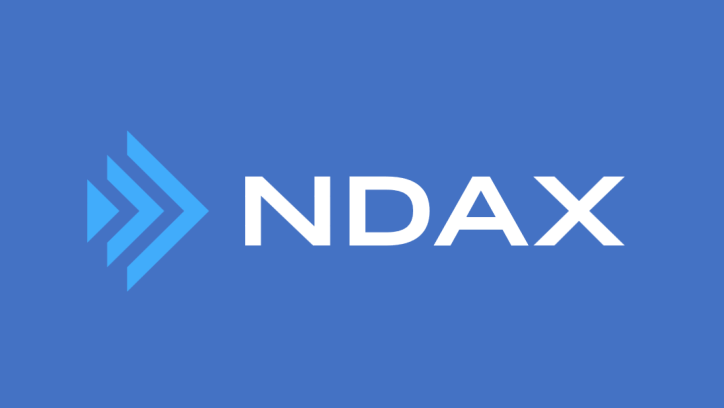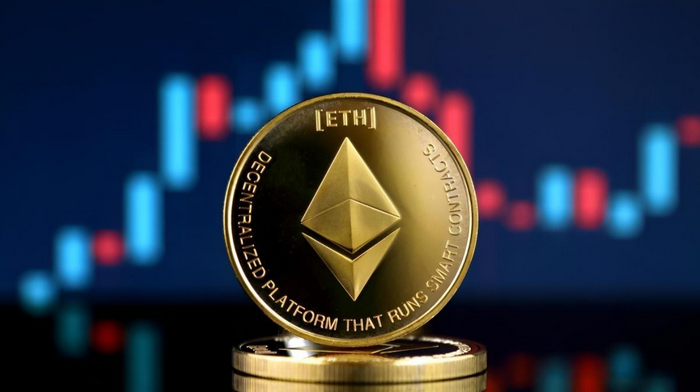-
 Bitcoin
Bitcoin $108,262.4325
-1.40% -
 Ethereum
Ethereum $2,518.2882
-2.94% -
 Tether USDt
Tether USDt $1.0003
-0.01% -
 XRP
XRP $2.2262
-1.71% -
 BNB
BNB $653.9254
-1.55% -
 Solana
Solana $148.1036
-3.11% -
 USDC
USDC $1.0000
0.01% -
 TRON
TRON $0.2829
-1.45% -
 Dogecoin
Dogecoin $0.1639
-4.82% -
 Cardano
Cardano $0.5742
-4.43% -
 Hyperliquid
Hyperliquid $38.9506
-3.95% -
 Sui
Sui $2.9040
-4.34% -
 Bitcoin Cash
Bitcoin Cash $484.8307
-2.62% -
 Chainlink
Chainlink $13.1971
-3.73% -
 UNUS SED LEO
UNUS SED LEO $9.0822
0.51% -
 Avalanche
Avalanche $17.8613
-4.01% -
 Stellar
Stellar $0.2385
-2.26% -
 Toncoin
Toncoin $2.7570
-3.88% -
 Shiba Inu
Shiba Inu $0.0...01145
-3.99% -
 Litecoin
Litecoin $86.9999
-2.43% -
 Hedera
Hedera $0.1538
-3.90% -
 Monero
Monero $313.7554
-2.03% -
 Polkadot
Polkadot $3.3681
-5.08% -
 Dai
Dai $1.0000
0.00% -
 Ethena USDe
Ethena USDe $1.0001
-0.01% -
 Bitget Token
Bitget Token $4.4401
-2.97% -
 Uniswap
Uniswap $6.9644
-8.41% -
 Pepe
Pepe $0.0...09666
-4.79% -
 Aave
Aave $266.5686
-5.04% -
 Pi
Pi $0.4713
-4.95%
A guide to buying Ethereum in Canada: a beginner-friendly approach
To purchase Ethereum in Canada, you need to choose a secure trading platform such as Ndax or Coinberry, complete registration and identity verification, and purchase it on the platform after recharge the funds and transfer it to your personal wallet.
Apr 11, 2025 at 03:35 pm

In Canada, Ethereum, as a popular cryptocurrency, has attracted the attention of many investors. For beginners, it is crucial to master the right buying method. Next, we will introduce the specific steps to purchase Ethereum in Canada.
Choose a cryptocurrency trading platform
Research different platforms : Canada has multiple cryptocurrency trading platforms to choose from, such as Ndax, Coinberry, etc. Ndax is a trading platform designed for Canadians, launched in 2018 and registered in Canada. Coinberry is also a well-known platform and has a certain influence in the field of Canadian cryptocurrency trading. You can learn about user experience, security, transaction fees and other information on each platform through online comments, industry reports, etc.

Platform security considerations : Priority is given to platforms with good security records. Check whether the platform uses multiple encryption technology to protect user data and whether there is a cold storage mechanism to store most of the user funds to prevent hackers. For example, some platforms will store more than 90% of user assets in cold wallets. At the same time, learn whether the platform has insurance to cover the loss of funds caused by security breaches.
Transaction fee comparison : Transaction fees vary between different platforms. Some platforms charge handling fees based on a certain proportion of the transaction amount, such as 0.1% to 0.25%. Some platforms also charge additional fees for fiat currency recharge, withdrawal and other operations. When choosing a platform, you should consider various expenses in a comprehensive way and choose a platform with more reasonable expenses to reduce transaction costs.
User interface and function ease of use : For beginners, a platform that is simple to operate and interface friendly is very important. The platform should have a clear trading interface and be easy to find an operation portal to purchase Ethereum. At the same time, it provides real-time market data, price charts and other functions to facilitate users to understand market dynamics and make trading decisions. For example, the trading interface of some platforms will intuitively display information such as Ethereum's current price, buying and selling depth, etc.
Complete platform registration and identity verification
Go to the platform official website to register : After selecting the platform, enter its official website and click the registration button. Usually you need to fill in your email address, set your password and other information. Be sure to use a commonly used and secure email address to receive important notifications and verification codes from the platform.
Identity verification process : Canada's cryptocurrency trading platform complies with anti-money laundering (AML) and Know Your Customer (KYC) regulations and requires users to authenticate. It is generally required to upload a government-issued ID card, such as a driver's license, passport or ID card. Follow the platform prompts to take a clear photo of the ID and upload it. Some platforms may also require users to provide address proof, such as utility bills, bank statements, etc., to confirm the user's residence address.
Waiting for review to be approved : After submitting the identity verification information, the platform will conduct an audit. The review time varies from platform to platform and may range from several hours to several days. During this period, wait patiently for the platform notification. If there is a problem during the review process, if the ID photo is not clear, the platform will ask to resubmit relevant information.
Recharge funds to the transaction account
Choose a recharge method : The platform usually provides a variety of recharge methods, common ones include bank transfer, credit card/debit card payment, etc. Bank transfers are relatively safe, but may take 1-3 working days to arrive. Credit/debit card payments are faster, but some banks may restrict or prohibit transfers to cryptocurrency trading platforms, and it is best to consult your own bank before trying.
Bank transfer operation : If you choose bank transfer, find the relevant options for bank transfer in the platform account and obtain the bank account information provided by the platform, including the name of the account opening bank, account number, transfer address, etc. According to the bank's transfer process, the funds prepared to purchase Ethereum will be transferred from your own bank account to the platform's designated account. When transferring money, be careful to fill in the correct information to avoid loss of funds or delayed arrival of the account due to information errors.
Credit Card/Debit Card Recharge : If your bank allows it, select the credit card/debit card payment option in the platform recharge interface. Enter the card number, validity period, CVV code and other information of the credit/debit card, and follow the prompts to complete the payment. Some platforms may set limits on credit card/debit card recharge. If the recharge amount is large, it may need to be carried out in multiple times.
Purchase Ethereum on the platform

Enter the trading interface : After completing the identity verification and recharge of funds, log in to the trading platform account and find the trading interface entrance. Generally, you can find related options such as "Trade" or "Market" on the platform homepage or account management page.
Select Ethereum trading pair : In the trading interface, find Ethereum trading pair. Common trading pairs include ETH/CAD (Ethereum and Canadian dollar trading pairs). Make sure to choose the right trading pair to avoid misoperation to purchase other cryptocurrencies.
Set up a purchase order : Enter the quantity or amount you want to purchase Ethereum. You can choose a market price order, that is, buy it immediately according to the current market price; you can also choose a limit order to set a purchase price you expect, and when the market price reaches this price, the order will be automatically sold. For example, if the current Ethereum price is 2000 CAD, you think the price may fall a bit, you can set a limit order of 1950 CAD and buy when waiting for the price to pull back.
Confirm and submit an order : Carefully check the various information of the purchase order, including purchase quantity, price, transaction fees, etc. After confirming that, click the Submit Order button. Once the order is submitted, the platform will execute the transaction according to the market conditions. If it is a market price order, it will usually be sold immediately; if it is a limit order, it will need to wait until the market price meets the set conditions before the transaction will be completed.
Transfer Ethereum to personal wallet (optional but recommended)
Choose Ethereum Wallet : There are many types of Ethereum wallets, such as hot wallets (such as Coinbase wallets, MetaMask, etc., which are easy to use online), cold wallets (such as Ledger Nano S, Trezor and other hardware wallets, which are more secure and suitable for long-term storage of large assets), desktop wallets (such as Exodus, etc., which can be downloaded to your personal computer). Choose the right wallet according to your needs and usage habits. If you focus on convenience and frequent transactions, a hot wallet may be a better choice; if you focus more on asset security and plan to hold Ethereum for a long time, a cold wallet is more suitable.
Create or import wallet : Taking the hot wallet MetaMask as an example, after installing the MetaMask plug-in in your browser, follow the prompts to create a new wallet or import an existing wallet (if you have used another Ethereum wallet before). When creating a wallet, be sure to keep the mnemonic words of the wallet properly. This is an important certificate for restoring the wallet and do not disclose it to anyone.
Get the wallet address : In the wallet interface, find the wallet address of Ethereum. The wallet address is similar to a bank account number and is the unique identifier for receiving Ethereum. Ensure accurate copying of the wallet address to avoid loss of Ethereum due to address errors.
Withdraw coins from the trading platform : Return to the trading platform account, find the option to withdraw coins or withdraw cash, and select withdraw coins to the Ethereum Wallet. Enter the previously copied wallet address and specify the amount of withdrawal. The platform may charge a certain withdrawal fee, and the handling fee standards of different platforms are different. After confirming that the withdrawal information is correct, submit the withdrawal application. The withdrawal process may take some time, depending on the congestion of the Ethereum network and the processing speed of the platform, generally ranging from minutes to hours.
Disclaimer:info@kdj.com
The information provided is not trading advice. kdj.com does not assume any responsibility for any investments made based on the information provided in this article. Cryptocurrencies are highly volatile and it is highly recommended that you invest with caution after thorough research!
If you believe that the content used on this website infringes your copyright, please contact us immediately (info@kdj.com) and we will delete it promptly.
- Bitcoin's Pattern Break: Are HODLers the Key to the Next Surge?
- 2025-07-04 18:50:12
- Bitcoin Price, Trump's Bill, and the $150K Dream: A NYC Take
- 2025-07-04 19:50:12
- Ethereum, LILPEPE, and the July Bounce: Will Pepe Steal ETH's Thunder?
- 2025-07-04 19:10:12
- Binance Institutional Loans: Unlocking 4x Leverage and Zero Interest for Whales
- 2025-07-04 19:15:12
- Bitcoin Bull Run: Analysts Eye Peak in Late 2025?
- 2025-07-04 19:20:13
- Pepe Indicators, Bullish Forecast: Can the Meme Coin Rally?
- 2025-07-04 19:25:12
Related knowledge

How to customize USDT TRC20 mining fees? Flexible adjustment tutorial
Jun 13,2025 at 01:42am
Understanding USDT TRC20 Mining FeesMining fees on the TRON (TRC20) network are essential for processing transactions. Unlike Bitcoin or Ethereum, where miners directly validate transactions, TRON uses a delegated proof-of-stake (DPoS) mechanism. However, users still need to pay bandwidth and energy fees, which are collectively referred to as 'mining fe...

USDT TRC20 transaction is stuck? Solution summary
Jun 14,2025 at 11:15pm
Understanding USDT TRC20 TransactionsWhen users mention that a USDT TRC20 transaction is stuck, they typically refer to a situation where the transfer of Tether (USDT) on the TRON blockchain has not been confirmed for an extended period. This issue may arise due to various reasons such as network congestion, insufficient transaction fees, or wallet-rela...

How to cancel USDT TRC20 unconfirmed transactions? Operation guide
Jun 13,2025 at 11:01pm
Understanding USDT TRC20 Unconfirmed TransactionsWhen dealing with USDT TRC20 transactions, it’s crucial to understand what an unconfirmed transaction means. An unconfirmed transaction is one that has been broadcasted to the blockchain network but hasn’t yet been included in a block. This typically occurs due to low transaction fees or network congestio...

How to check USDT TRC20 balance? Introduction to multiple query methods
Jun 21,2025 at 02:42am
Understanding USDT TRC20 and Its ImportanceUSDT (Tether) is one of the most widely used stablecoins in the cryptocurrency market. It exists on multiple blockchain networks, including TRC20, which operates on the Tron (TRX) network. Checking your USDT TRC20 balance accurately is crucial for users who hold or transact with this asset. Whether you're sendi...

What to do if USDT TRC20 transfers are congested? Speed up trading skills
Jun 13,2025 at 09:56am
Understanding USDT TRC20 Transfer CongestionWhen transferring USDT TRC20, users may occasionally experience delays or congestion. This typically occurs due to network overload on the TRON blockchain, which hosts the TRC20 version of Tether. Unlike the ERC20 variant (which runs on Ethereum), TRC20 transactions are generally faster and cheaper, but during...

The relationship between USDT TRC20 and TRON chain: technical background analysis
Jun 12,2025 at 01:28pm
What is USDT TRC20?USDT TRC20 refers to the Tether (USDT) token issued on the TRON blockchain using the TRC-20 standard. Unlike the more commonly known ERC-20 version of USDT (which runs on Ethereum), the TRC-20 variant leverages the TRON network's infrastructure for faster and cheaper transactions. The emergence of this version came as part of Tether’s...

How to customize USDT TRC20 mining fees? Flexible adjustment tutorial
Jun 13,2025 at 01:42am
Understanding USDT TRC20 Mining FeesMining fees on the TRON (TRC20) network are essential for processing transactions. Unlike Bitcoin or Ethereum, where miners directly validate transactions, TRON uses a delegated proof-of-stake (DPoS) mechanism. However, users still need to pay bandwidth and energy fees, which are collectively referred to as 'mining fe...

USDT TRC20 transaction is stuck? Solution summary
Jun 14,2025 at 11:15pm
Understanding USDT TRC20 TransactionsWhen users mention that a USDT TRC20 transaction is stuck, they typically refer to a situation where the transfer of Tether (USDT) on the TRON blockchain has not been confirmed for an extended period. This issue may arise due to various reasons such as network congestion, insufficient transaction fees, or wallet-rela...

How to cancel USDT TRC20 unconfirmed transactions? Operation guide
Jun 13,2025 at 11:01pm
Understanding USDT TRC20 Unconfirmed TransactionsWhen dealing with USDT TRC20 transactions, it’s crucial to understand what an unconfirmed transaction means. An unconfirmed transaction is one that has been broadcasted to the blockchain network but hasn’t yet been included in a block. This typically occurs due to low transaction fees or network congestio...

How to check USDT TRC20 balance? Introduction to multiple query methods
Jun 21,2025 at 02:42am
Understanding USDT TRC20 and Its ImportanceUSDT (Tether) is one of the most widely used stablecoins in the cryptocurrency market. It exists on multiple blockchain networks, including TRC20, which operates on the Tron (TRX) network. Checking your USDT TRC20 balance accurately is crucial for users who hold or transact with this asset. Whether you're sendi...

What to do if USDT TRC20 transfers are congested? Speed up trading skills
Jun 13,2025 at 09:56am
Understanding USDT TRC20 Transfer CongestionWhen transferring USDT TRC20, users may occasionally experience delays or congestion. This typically occurs due to network overload on the TRON blockchain, which hosts the TRC20 version of Tether. Unlike the ERC20 variant (which runs on Ethereum), TRC20 transactions are generally faster and cheaper, but during...

The relationship between USDT TRC20 and TRON chain: technical background analysis
Jun 12,2025 at 01:28pm
What is USDT TRC20?USDT TRC20 refers to the Tether (USDT) token issued on the TRON blockchain using the TRC-20 standard. Unlike the more commonly known ERC-20 version of USDT (which runs on Ethereum), the TRC-20 variant leverages the TRON network's infrastructure for faster and cheaper transactions. The emergence of this version came as part of Tether’s...
See all articles

























































































